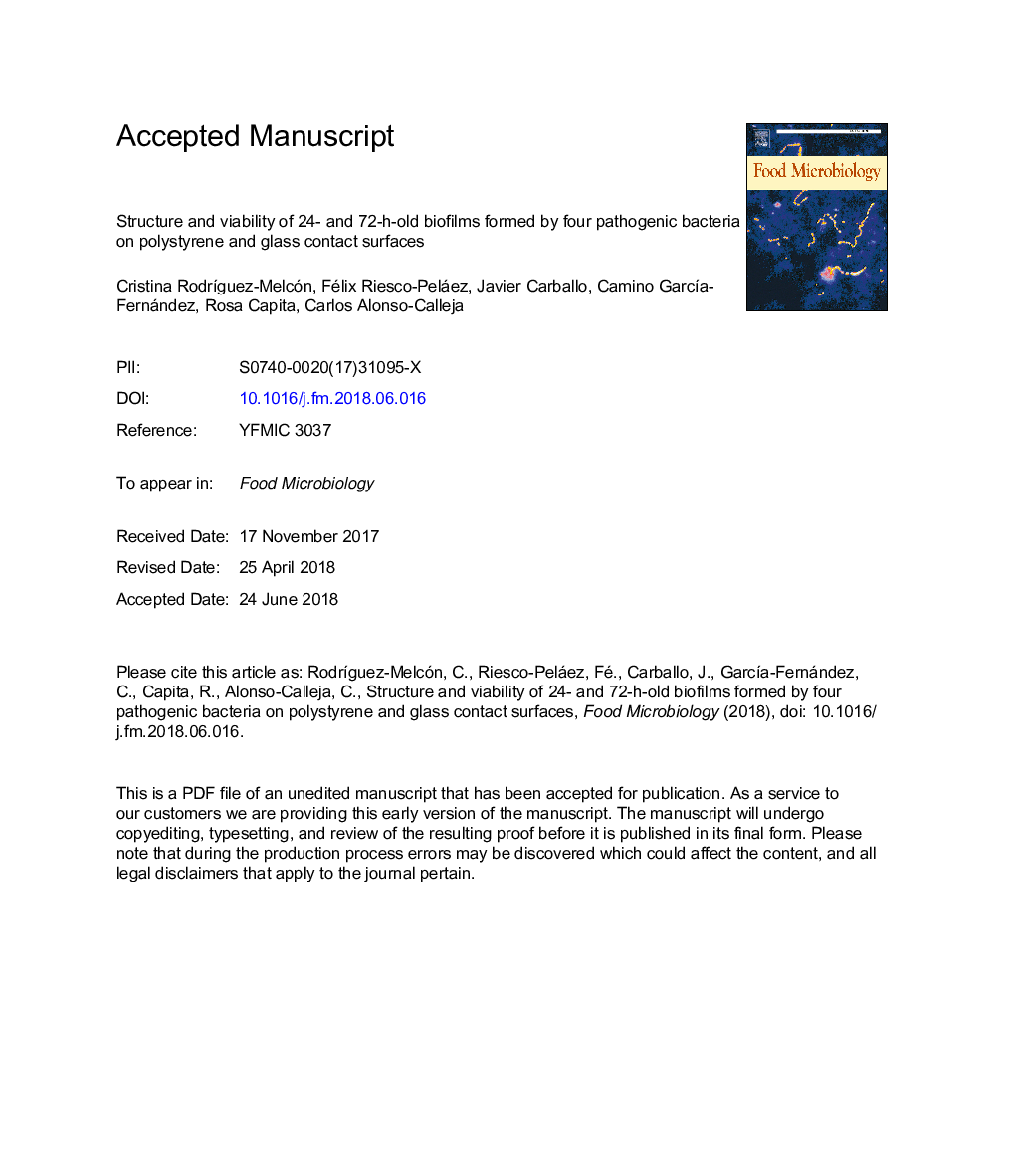| Article ID | Journal | Published Year | Pages | File Type |
|---|---|---|---|---|
| 8843469 | Food Microbiology | 2018 | 20 Pages |
Abstract
The biofilms formed by Salmonella Hadar (SH174), Listeria monocytogenes (LM6), methicillin-resistant Staphylococcus aureus (MRSA125) and vancomycin-resistant Enterococcus faecium (VRE61s) on polystyrene and glass after 24â¯h and 72â¯h of incubation at 37â¯Â°C were examined by confocal laser scanning microscopy (CLSM) after staining with SYTO9 and propidium iodide (PI). A lower average biovolume (Pâ¯<â¯0.05) was observed for SH174 biofilms (73,073.61â¯Â±â¯52,365.90â¯Î¼m3 in the observation field of 14,161â¯Î¼m2) than for LM6 (180,804.50â¯Â±â¯32,554.62â¯Î¼m3), MRSA125 (208,605.34â¯Â±â¯57,534.93â¯Î¼m3) and VRE61s (212,543.91â¯Â±â¯39,718.62â¯Î¼m3) biofilms. SH174 showed the greatest (P < 0.05) biovolume on glass, as compared with polystyrene. Biofilms of LM6, MRSA125 and VRE61s were produced at comparable levels on both contact surfaces. After 24â¯h, SH174 formed small scattered cell clusters, and biovolume of biofilms increased (Pâ¯<â¯0.05) after 72â¯h. By contrast, LM6, MRSA125 and VRE61s formed compact biofilms quickly (24â¯h) on both contact surfaces. Seventy-two-hour-old biofilms showed the largest biovolumes of dead or damaged (PI-stained) cells, except for MRSA125 (polystyrene) and VRE61s (polystyrene and glass). Appropriate procedures for the disinfection of food processing surfaces immediately after use are required to prevent the formation of biofilm by pathogenic bacteria.
Related Topics
Life Sciences
Agricultural and Biological Sciences
Food Science
Authors
Cristina RodrÃguez-Melcón, Félix Riesco-Peláez, Javier Carballo, Camino GarcÃa-Fernández, Rosa Capita, Carlos Alonso-Calleja,
